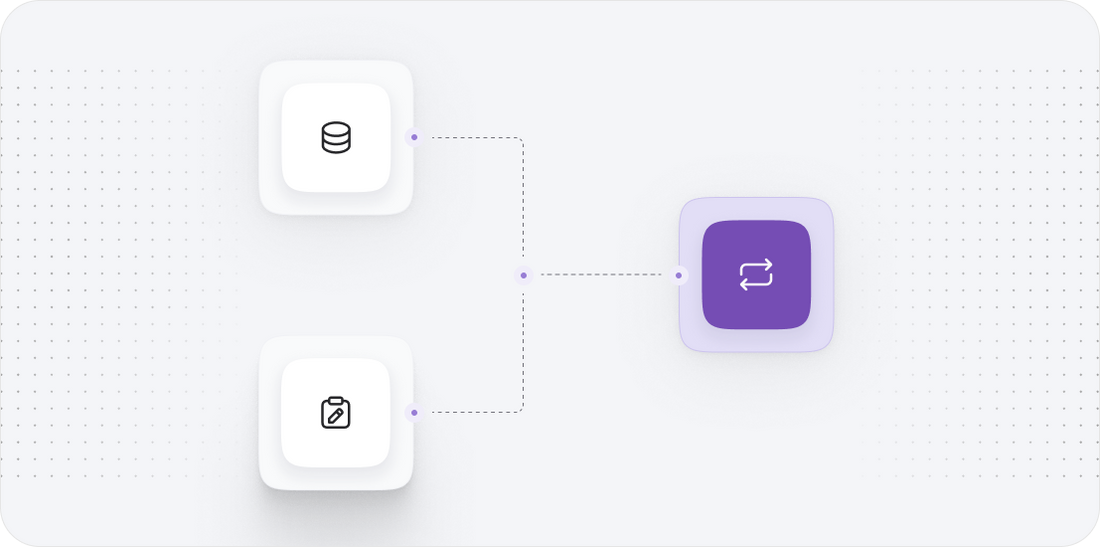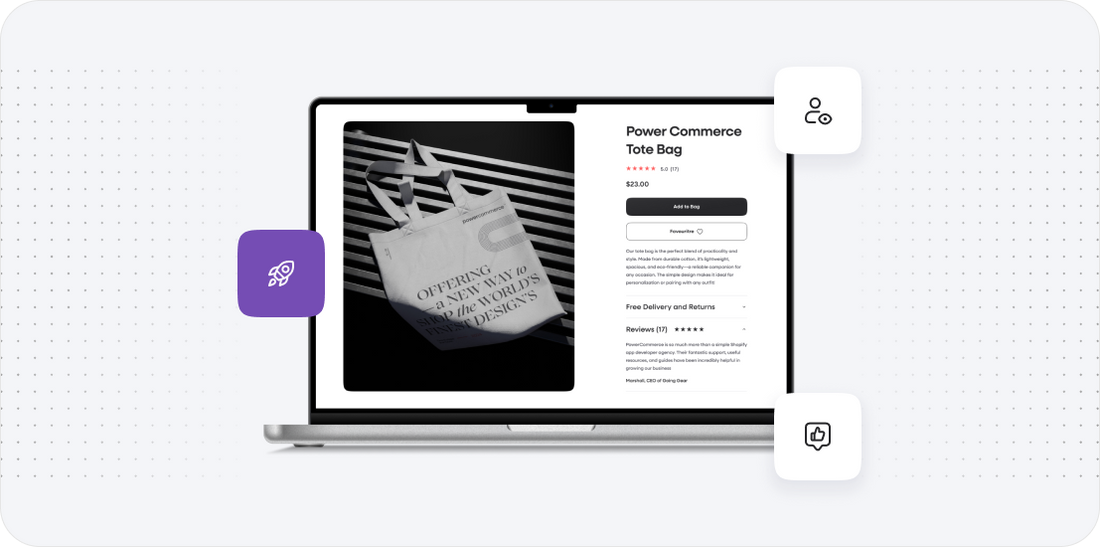





Shoper to Shopify
Migrating your store from Shoper to Shopify might seem daunting, but with proper planning and the right tools, it's a smooth process. Follow this step-by-step guide to ensure a successful transition.
Schedule a call
Step-by-Step Migration Guide: Shoper to Shopify migration guide
Step 1: Prepare for Migration
In this step, we focus on the essential preparations necessary for a successful migration from Shoper to Shopify. This includes auditing your current site, setting clear objectives, and creating a comprehensive data migration plan.
Step 2: Back Up Your Data
Backing up data is crucial to prevent loss during the migration process. In this step, we will ensure that all critical data from Shoper is securely backed up before initiating the migration.
Step 3: Choose Your Migration Method
Selecting the appropriate migration method is essential for a smooth transition. In this step, we will explore various methods available to migrate data from Shoper to Shopify.
Step 4: Import Data into Shopify
This step involves the actual importation of data into your new Shopify store. We will discuss the procedures to ensure all data is accurately transferred and properly set up.
Step 5: Configure Your Store Settings
Configuring your store settings in Shopify is essential to replicate the functionalities you had in Shoper. In this step, we will set up payment, shipping, and tax settings.
Step 6: Optimize SEO and Content
Optimizing your SEO and content during the migration is vital for maintaining search visibility. In this step, we will ensure that product descriptions, meta tags, and URLs are properly configured.
Step 7: Test and Launch Your Store
Testing your store before launch is essential to identify any issues and ensure a smooth customer experience. In this step, we will conduct thorough testing and prepare for the official launch.
Power Your Step - Get in Touch
Ready to migrate from Shoper to Shopify? Contact PowerCommerce today for expert assistance and seamless migration support.
Step 1: Prepare for Migration
Preparing for migration is a critical first step that sets the foundation for a successful transition from Shoper to Shopify. We must begin by conducting a thorough audit of your current Shoper store to understand the existing data and structure. This involves examining your product listings, customer records, historical orders, and any other relevant information. Establishing your objectives for the migration is also essential, as it guides the entire process. Determine what you aim to achieve with the migration, such as improved site performance, enhanced user experience, or better scalability.
Next, we create a detailed data migration plan. This plan should outline the specific data types to be migrated, the tools needed for the migration, and a timeline for each phase of the process. Having a clear plan helps minimize disruptions and ensures that all team members are aligned on their roles and responsibilities. This phase involves assembling a team that includes technical experts, project managers, and content creators to handle the various aspects of the migration.
- Audit Your Current Site: Assess all aspects of your existing store, including:
- Product information
- Customer records
- Historical orders
- Images and content
- Set Clear Objectives: Define your goals for the migration, such as:
- Improved site performance
- Enhanced user experience
- Better scalability
- Create a Data Migration Plan: Outline the data to be migrated, tools to use, and a timeline:
- Specify data types (products, customers, orders)
- Choose migration tools or apps
- Establish a timeline for each phase

Step 2: Back Up Your Data
Before we begin the actual migration, it is imperative to back up all essential data from your Shoper store. This step is vital to safeguard against any potential data loss that may occur during the transition. A proper backup allows us to revert to the original state in case of any issues or failures during the migration process.
To effectively back up your data, we recommend exporting all relevant information, which includes products, customer data, historical orders, and any other critical content. Shoper provides options to export data in various formats, typically CSV files, which are compatible with Shopify’s import requirements. Ensure that the backup process is thorough and verify that all files have been successfully exported.
- Export Data from Shoper: Follow these steps:
- Navigate to the admin panel of your Shoper store.
- Locate the data export options, typically found under Settings or Tools.
- Select the data types you wish to back up (products, orders, customers).
- Choose the format for the export, preferably CSV.
- Download the exported files and store them securely.
- Verify Backup Integrity: After exporting, confirm:
- All data files are complete and intact.
- Check for missing items or discrepancies.

Step 3: Choose Your Migration Method
The choice of migration method can significantly affect the efficiency and success of your migration from Shoper to Shopify. We have several options available, each with its advantages and potential drawbacks. Understanding these methods is crucial to selecting the one that best fits your business needs.
We can choose between manual migration, using CSV files, or utilizing third-party migration apps. Manual migration involves transferring data by copying and pasting, which can be time-consuming but offers the most control. CSV files allow for bulk importation of data, which is faster and requires less manual work. Finally, third-party migration apps provide automated solutions that streamline the process and reduce the risk of errors.
- Manual Migration: Suitable for smaller data sets, involves:
- Copying product descriptions, images, and customer data.
- Pasting them into the corresponding sections in Shopify.
- CSV File Migration: Involves:
- Exporting data from Shoper into CSV format.
- Importing these CSV files into Shopify.
- Ensure proper mapping of fields to maintain data integrity.
- Third-Party Migration Apps: Consider using apps like:
- LitExtension
- Cart2Cart
- MigrateGuru
- These apps simplify the process by automating data transfers and ensuring accuracy.

Step 4: Import Data into Shopify
After selecting the appropriate migration method, we proceed to import the data into your new Shopify store. This step is crucial as it involves transferring all your backed-up data from Shoper, including products, customers, and orders, ensuring that everything is accurately reflected in your new environment.
For CSV file imports, Shopify provides a straightforward process where you can upload your files directly through the admin interface. It is essential to follow the correct sequence when importing data to avoid any errors. Typically, we recommend importing products first, followed by customers and then historical orders. This order helps maintain data relationships and integrity.
- Importing Products: Steps to follow:
- Log into your Shopify admin panel.
- Navigate to the Products section.
- Select the 'Import' option and upload your CSV file containing product data.
- Review the mapping of fields to ensure accuracy.
- Importing Customers: After products, proceed with:
- Go to the Customers section.
- Select 'Import' and upload the CSV file for customer data.
- Importing Historical Orders: Finally, import orders by:
- Accessing the Orders section.
- Select 'Import' and upload the relevant CSV file.

Step 5: Configure Your Store Settings
Once we have successfully imported all data into Shopify, the next step is to configure your store settings to ensure that it operates smoothly. This includes setting up payment gateways, shipping methods, tax settings, and any additional preferences that will enhance the customer experience.
Shopify provides a user-friendly interface for managing these settings. We must ensure that all payment methods you previously offered on Shoper are replicated in Shopify, allowing for a seamless transition for your customers. Additionally, we will need to configure shipping options based on your business model and customer expectations.
- Payment Settings: To configure payments, follow these steps:
- Go to the Settings section in Shopify.
- Select 'Payments' and choose your preferred payment gateways (e.g., PayPal, Stripe).
- Ensure all settings align with your previous payment options on Shoper.
- Shipping Settings: For shipping, we need to:
- Navigate to the Settings section.
- Select 'Shipping and delivery'.
- Set up shipping zones and rates based on your previous configurations.
- Tax Settings: Tax configurations should be checked by:
- Going to Settings and selecting 'Taxes'.
- Ensure tax rates reflect your business's operational areas.

Step 6: Optimize SEO and Content
SEO is a crucial component of your ecommerce success, and during the migration from Shoper to Shopify, we must prioritize optimizing your site's SEO elements. This step ensures that your new Shopify store retains its search engine visibility and improves upon it where possible.
We will start by reviewing and updating product descriptions, meta titles, and meta descriptions to align with best SEO practices. Additionally, we will implement 301 redirects to ensure that any existing links to your old Shoper store will lead customers to the correct pages on your new Shopify site. This process is essential for preserving your SEO ranking and minimizing any potential traffic loss.
- Review and Update Product Descriptions: Ensure that:
- All product descriptions are unique and keyword-rich.
- Images have optimized alt tags for better visibility.
- Configure Meta Tags: We need to:
- Set up meta titles and descriptions for each product and page.
- Utilize keywords relevant to your business for better search visibility.
- Implement 301 Redirects: This is crucial to:
- Redirect old URLs from Shoper to the new Shopify URLs.
- Preserve SEO rankings and ensure no broken links occur.

Step 7: Test and Launch Your Store
Before officially launching your Shopify store, we must conduct extensive testing to identify any potential issues that could affect the user experience. This phase typically involves checking functionality, ensuring all links work, and validating that all data has been accurately migrated.
Testing should cover various aspects of your store, including the checkout process, payment gateways, and customer accounts. We recommend involving team members to perform a comprehensive check, simulating customer journeys to ensure everything operates as expected. Once we confirm that all systems are functioning correctly, we can prepare for the official store launch.
- Conduct Functionality Testing: This includes:
- Testing the checkout process for smooth transactions.
- Validating payment methods to ensure they work correctly.
- Checking product display and navigation for accuracy.
- Simulate Customer Journeys: It’s essential to:
- Use test accounts to place orders and check the experience.
- Ensure emails and notifications are correctly set up.
- Final Checks: Before launch, confirm:
- All content is accurate and up-to-date.
- SEO settings are correctly implemented.

Power Your Step - Get in Touch
At PowerCommerce, we understand that migrating your online store is a significant step towards growth and success. Our team of experts is here to ensure that your transition from Shoper to Shopify is as smooth and efficient as possible. With our extensive experience and customer-centric approach, we are committed to minimizing downtime and maximizing your store's performance.
If you are ready to take the next step, we invite you to reach out to us for personalized support. Our consultation process is risk-free, and we offer flexible pricing options tailored to your needs. Don’t wait any longer--let us help you power your ecommerce journey!
- Visit our contact page: Contact Us
- Call us at 800-099-9090
- Email us at info@powercommerce.com
Let’s work together to achieve your ecommerce goals!
Stay aligned on what's happening in the commerce world
Trusted by 1000+ innovative companies worldwide
Schedule Your Migration Today
For businesses prioritizing simplicity, scalability, and robust support, Shopify is the clear winner.
Looking to migrate without hassle? Power Commerce can handle the entire process, ensuring smooth data transfer, store setup, and post-launch success.
Marka Marulića 2, Sarajevo, 71000 BiH
00387 60 345 5801
info@powercommerce.com


